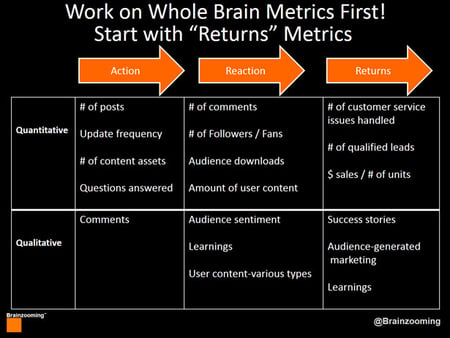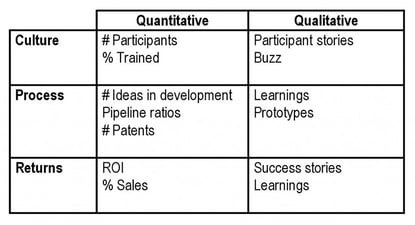In Professor Jerry Z. Muller’s new book, The Tyranny of Metrics (affiliate link), he explores the rush in today's business environment to measure everything. This dynamic places an emphasis on eliminating judgment as a decision-making factor and replacing it with numbers-based business metrics. It is driven by the belief that motivating behaviors through linking incentives and penalties to publicly-available, standardized data is universally beneficial.
Muller’s challenge to a metrics-obsessed perspective is summed up in this statement: “Not everything that is important is measurable, and much that is measurable is unimportant.”
In The Tyranny of Metrics (affiliate link), Muller shares multiple questions for leaders to ask, relative to business metrics, to ensure they are providing value and addressing their intended outcomes. For each group of questions, we provide an idea on how to adapt your business metrics strategy.

What are the measurement objectives, and how does the available information fit them?
Muller's first questions focus on identifying measurement objectives and the usefulness of multiple metrics. He suggests a fundamental challenge in applying known measures to determine performance incentives: humans will try to game whatever the system is to maximize rewards instead of the ultimate impacts. Systems and processes with inanimate objects present stronger opportunities for successful measurement, versus human-centric activities, since inanimate objects are unaware of measurement.
He suggests that metrics are more effective when oriented toward internal audiences focused on performance improvement (in contrast to ones developed and shared publicly to set benchmarks, funding levels, and reward performance). His argument? Internal practitioners are more likely to understand and appropriately apply metrics to improve outcomes for the greater good.
Idea 1: Embracing a Broader Set of Metrics
We advise executives to consider a set of metrics that is broader than a few numbers meant to represent performance for an entire system. While there is a certain ease in overall indices and green-yellow-red metrics dashboards, other activities, indicators, and even stories exist behind the simplified numbers. These are no less relevant to understanding overall performance.
Consider both quantitative AND qualitative metrics. Numbers-based metrics are well understood, and are likely what people think of first. Qualitative metrics incorporate stories, images, and other non-numeric indicators that also shed light on process or system performance. While you cannot necessarily make decisions based on qualitative metrics, they are vital for placing numbers in context and suggesting how stakeholders are experiencing the process results.
You can also better represent outcomes by recognizing that important metrics exist before the end results are in place. We recommend three types of sequential metrics:
- Action Metrics – These are the initial development activities and tactics leading to ultimate results.
- Reaction or Interaction Metrics – These provide early indicators on the extent that actions are beginning (or not) to bring about changes and positive differences.
- Return Metrics – These metrics, which are what we associate with the final performance results, monitor the overall outcome.
Consider a broader set of metrics to reveal early indicators that help influence a system for stronger performance before the end results are in place.

What are the opportunities and limitations to developing and gathering business metrics?
Muller poses two questions for leaders when developing metrics: What is the cost of gathering data, and who can best develop the appropriate measures?
Beyond direct costs in gathering measures, Muller advises leaders to consider the opportunity costs associated with collecting metrics. These sometimes-hidden costs need to be evaluated against performance improvement returns. Muller cautions that when data gathering responsibilities fall on practitioners, it comes at the expense of the practitioners performing the beneficial tasks they are trying to measure. Incorporating these trade-offs can present a contrasting view of the value of measurement.
When developing measurements, however, Muller does recommend heavily involving practitioners. Individuals closer to having a stake in the outcome will develop more robust metrics than senior executives removed from what happens during daily activities. He suggests broader extend through evaluating metrics as they are populated and reported. This can provide an important check on accuracy and efficacy.
Idea 2: Plan Early for Metrics
During strategic planning, we always discuss the options of starting or finishing with identifying metrics. Yet, even when developing a plan of action and addressing metrics once the plan is largely done, it’s useful to work back through the plan to see whether the intended metrics will be readily available. If not, adjust the plan to integrate efficient and effective metrics development within the prescribed tactics.
From experience in marketing plan development and implementation, we are struck by how many times the outstanding outcomes a plan promises have no practical tracking approach. By taking time during planning to consider how the metrics will be tracked, you can head off these issues before implementation begins.
Question: How do the business metrics, once in place, drive performance and behavior?
Muller discusses metrics driving under-performance and unintended consequences via healthcare examples. Measure and pay doctors on the number of patients they see, and appointments become shorter and less thorough. Switch the key metric to successful patient outcomes, and doctors are incentivized to take the easiest cases. Muller advises recognizing the trade-offs, judgment calls, and range of behaviors related to any set of performance metrics.
Idea 3: Broader Business Metrics Signal Early Successes or Problems
Applying the idea of action-reaction-return metrics provides a way to better monitor sub-optimal performance. With action metrics in place, you have an early check on whether the appropriate implementation activities and are underway. Reaction metrics provide a check on assumptions about how specific actions will lead expected changes performance levels. These two early metrics areas both provide vital preliminary indicators to signal the need for adapting a plan well before all the return metrics are compiled.
How do your business metrics measure up?
Originally published in Inside the Executive Suite




